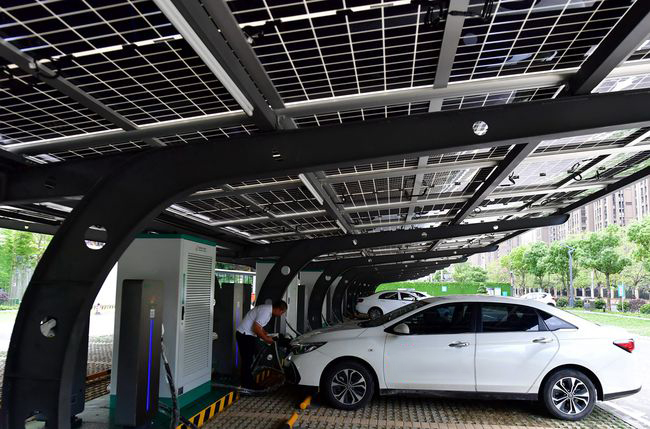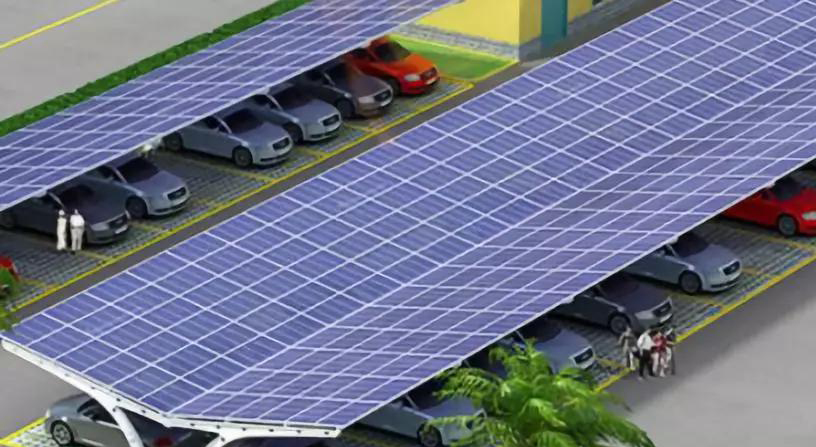Electronic Vehicle is a trend now and in the future. When cars do not use gasoline, they use electricity stored in batteries. However, the electricity in the battery still needs to be filled from the grid where the electricity is normally generated by power plants burning coal, so on the surface, it seems driving an electronic vehicle saves the environment but finally it just shifts its pollution to electricity plants where more coal need to be burned, and the overall pollution still not reduced.
So powering the vehicle with electricity is not the solution if the electricity does not come from renewable resources. When solar power plants generate electricity it can be stored directly in a battery or batter sets, a device called solar charge controller can stop filling the electricity into a battery once the battery is full, in this way to protect the battery, it’s also possible to fill the electricity in one battery from another battery where it’s electricity generated from solar panels.
 Electronic Vehicles can not be directly charged from household electricity, it requires a charging pile to convert the electricity from the grid into electricity that could be used to charge the EV. Charging electronic vehicles in a public place could be very expensive, and mostly it is limited by the place where electricity is supplied. Mostly, solar panels can provide more flexibility, during the day, they generate electricity and store it in battery packs, and the battery packs could supply electricity for electronic vehicles both day and night.
Electronic Vehicles can not be directly charged from household electricity, it requires a charging pile to convert the electricity from the grid into electricity that could be used to charge the EV. Charging electronic vehicles in a public place could be very expensive, and mostly it is limited by the place where electricity is supplied. Mostly, solar panels can provide more flexibility, during the day, they generate electricity and store it in battery packs, and the battery packs could supply electricity for electronic vehicles both day and night.
Without thinking about the environment and air pollution, constant replenishment of electricity to electronic vehicles could be a daunting cost. Using solar panels to supply electricity to the charging stations can give charge station owners more flexibility and also save the cost of paying commercial electricity bills.
A solar carport is an alternative to a traditional carport but provides more functionality such as charging piles and a lighting system. Solar carports use solar panels on the roof as tiles to provide shade and protection for the vehicles parked below; during the day, solar panels on the roof generate electricity for charging piles and batteries, and during the night, the batteries will supply the electricity for charging piles and the lighting system.
Solar carports are more and more popular in many cities, it is easy to deploy and are not limited to electricity provision. Electronic vehicles can be charged during it’s parking time, avoiding people looking for charging stations after the park or looking for the park after charging. Using solar-generated electricity can avoid using the electricity generated by coal burning, consequently reducing global carbon emissions, global warming, and economic loss. 
 The increasing usage of electronic vehicles requires more charging stations to be installed, anywhere the charging stations installed must require a place where the vehicle could be parked, anywhere the car parked must be a safe place and necessary shading is required during summer to protect the vehicles from the scorching sun and hailstorm damage. Solar panels cost almost nothing compared with the cost of luxury vehicles, using solar roofed carports helps homeowners save many costs and provides them the convenience of EV charge.
The increasing usage of electronic vehicles requires more charging stations to be installed, anywhere the charging stations installed must require a place where the vehicle could be parked, anywhere the car parked must be a safe place and necessary shading is required during summer to protect the vehicles from the scorching sun and hailstorm damage. Solar panels cost almost nothing compared with the cost of luxury vehicles, using solar roofed carports helps homeowners save many costs and provides them the convenience of EV charge.
Bi-facial solar panels are more suitable for solar carports as the back of the solar panels could generate additional electricity from the reflected sunlight. LEEKA Bi-facial N-type solar modules are very reliable and high-performance, for more detail, please click 🔗.